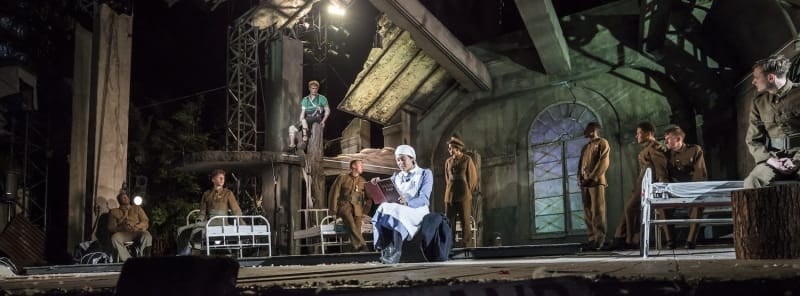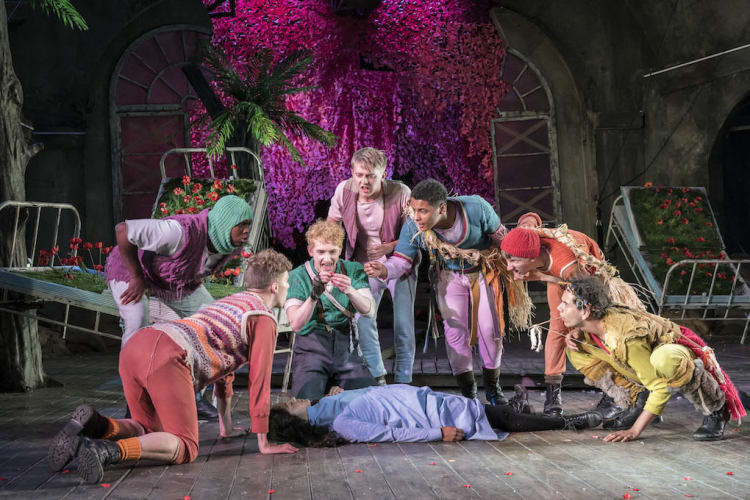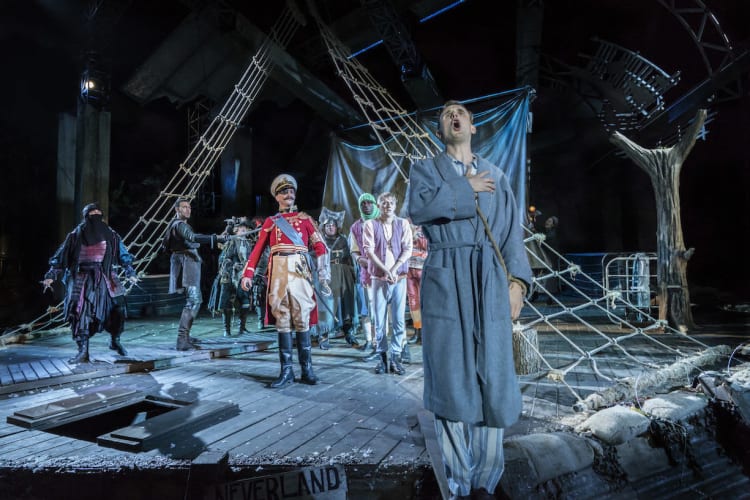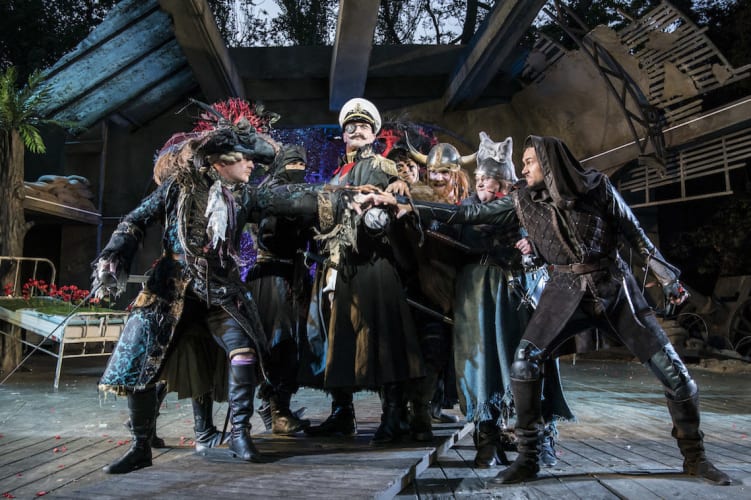As a child I wasn’t keen on Peter Pan, though I loved the theatre. I couldn’t really connect with the top-hatted Darlings, couldn’t see why Peter didn’t want to grow up and was certainly not going to say I believed in fairies.
I’ve encountered the play several times since but, while appreciating it as entertainment, it has never really touched me—until now, in this Open Air Theatre revival of its 2015 production. That is because, while giving Barrie’s core story, directors Timothy Scheader and Liam Steel, the designers and the company that created it together, have made it much more. This isn’t just about one boy who wouldn’t grow up but a generation of young men not allowed to do so.
Peter Pan premièred in 1904. Ten years later, there were boys from its audience in the trenches in France. “To die must be an awfully big adventure,” says the child Peter. For him it’s a game but it wasn’t for those boys.
The audience aisles lead down to a corrugated-iron lined trench and dug-out tunnels (one labelled Kensington Gardens) while through the stage above rise shell-shattered trees and a fit-up field station, to one side sandbags are stacked round an artillery gun and its doors open to a vista of no man’s land.
An Edwardian mother (Rebecca Thorn whose songs punctuate the evening) tidies the beds. There is something very sad about her but it’s only later she becomes mother concerned for her sons at the Front or mourning them, for soon her boys come bouncing in and not just John and Michael but many more.
Each in turn wears rather more army uniform until here is a ward full of soldiers and a gung-ho officer with an eye patch and one sleeve pinned up who gets fitted with a metal prosthetic. Boys have turned into soldiers and fact is paralleling fiction. Children’s rhymes turn into the songs the troops sang as they march to “The Grand Old Duke of York” and a line of gas-blinded soldiers enters.
From here on, two worlds are intertwined for, from the latest mail, the youngest soldier unwraps a teddy bear and, when a nurse reads a letter from his mother to an eye-bandaged soldier, a copy of Peter Pan falls the floor and, though matron says this is no time for stories, the nurse (Cora Kirk) starts to read the story to him and the others. As she takes a breath, the soldier fills in with the next line. There is a moment of general trauma that stretches all the nurses’ resources before Peter’s arrives at the window and it moves into the story.
The First War cast long shadows over my family that I grew up very aware of; perhaps that makes me more vulnerable, but I found this introduction incredibly moving.
There is no mention of Nana the nurse dog, no Mr Darling and Tinkerbell is a weird creature improvised from a military lantern and her voice more a scream than a tinkling bell (provided by skilled puppeteer Elisa de Grey).
When Peter Pan soars into the air and over the heads of the audience, there is a sudden surge of sheer happiness and this is a production that skilfully interweaves joy and poignancy and manages to avoid sentimentality (except perhaps for that believing-in-fairies moment). Perhaps here it’s really a matter of believing there is a future and survival.
Designer Jon Bausor rearranges hospital beds to create Neverland. They sprout turf and poppies, stuck up into a rocky island, reveal painted undersides to make a Wendy house and, as the soldiers create the transformation, they lose their uniforms and become lost boys and pirates (whom Jon Morrell costumes as fighters from across the centuries from Vikings to Chevaliers and Assassins.
It is a mixture of childlike imagination and bold theatricality. There is no attempt to hide the lines on which Peter flies or those controlling them and Rachael Canning has created more wickedly clever puppets: mermaids with gas mask faces, a lagoon full of underwater creatures and a magnificent jaw-snapping crocodile.
The nurse reading the story becomes a delightful Wendy (who definitely isn’t from Kensington) and, though Sam Angell’s Peter Pan, who must have pitched from his pram Glasgow, is so full-of-himself, he is also such fun that you can’t help but like and even admire him.
Dennis Herdman is the officer who thinks himself so very superior who turns into Hook, then revealing his own insecurities before being consigned to the crocodile. Theo Cowen is the boy with the book who becomes John, Omari Douglas the young soldier who becomes Michael and, among this highly talented company, Caroline Deyga has a delightful double as pirate Smee and the strict matron.
As the Peter Pan story returns to the real world and the war’s end, we see matron’s soft side and this splendid production offers not only a commemoration of the Great War and its losses but also a final tribute to the VAD and the other women's services who played such a vital role. This version of Peter Pan really hit home. It is certainly the best that I have seen.




